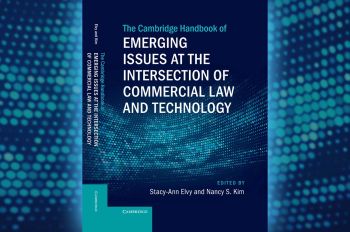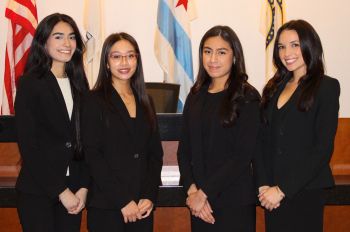Exploring Big City Life and Pioneering Research

Students from universities across the nation converged at Illinois Institute of Technology to engage in an intense 10-week research project and to see the benefits of studying in a large metropolitan city such as Chicago through the College of Computing’s Student Undergraduate Research Experience (SURE).
While the students were immersed in research projects focusing on mathematics and computation, they lived near Illinois Tech’s Mies Campus in Chicago’s Bronzeville neighborhood. They said it was easy to explore all the city has to offer through convenient public transportation, bike rental, and ride share options.
“The location [of the campus] is nice,” says Aniyah McWilliams, a rising fourth-year student at the University of Virginia. “Getting around the city was really easy.”
Marian Frick, who attends University of Kansas, says she had visited Chicago before but had never lived in the city as a 10-week resident.
“I always liked Chicago. It’s more friendly than New York,” she says. “But I like it a lot more now.”
Frick says she spent a lot of time on the beaches along Lake Michigan, exploring museums such as the Art Institute of Chicago, and finding new tastes at the city’s many restaurants. Although the big city can be hectic, Frick says she was able to find peaceful spaces across the city.
“There’s a lot here, and it can be overstimulating sometimes,” she says. “The neighborhood here [near campus] is pretty calm.”
Chicago also offered the students research opportunities that only a large city can. McWilliams was part of a team that worked with Matt Koenig, the director of baseball analytics for the Chicago White Sox.
By taking data from 4,260 Major League Baseball games during the 2022 and 2023 regular seasons, the research team developed a program to simulate game outcomes, predict the success of a specific game, and optimize a White Sox batting order.
Frick was a member of a research team that took advantage of the City of Chicago’s Open Data Portal, which contains information on the city’s administration and finance, transportation, public safety, buildings, and much more. It’s a wealth of free data that has proven to be a boon for researchers.
The team accessed auto crash data collected by the Chicago Police Department to build an algorithm that can predict locations of auto wrecks, as well as the how many people can be expected to sustain injuries. The team pulled information from 843,000 crashes since 2015 to develop the algorithm using a Hawkes process model.
A third team of visiting student researchers worked to optimize estimation projects using Quasi-Monte Carlo methods, which proved to reduce errors. These methods can be beneficial in analyzing combinatorial objects to financial options.
Fred Hickernell, Illinois Tech vice provost for research, says he was impressed by the work the students performed, and it reminded him of his undergraduate research experience, which he credits for putting him on the path to an academic career.
“Ten weeks is a short amount of time to conduct research and present it,” he noted after the student presentations. “I know a lot of it is not finished, and I’m glad to hear a lot of you plan to continue to work on these projects.”
Illinois Tech’s SURE program is funded by a Research Experience for Undergraduates grant from the National Science Foundation.
Image: SURE students at Chicago White Sox game.




